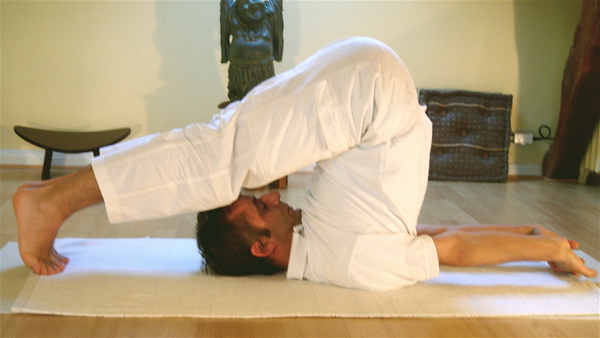|
Marguerite Agniel
Marguerite Agniel (1891 – c. 1971) was a Broadway actress and dancer, and then a health and beauty guru in New York in the early 20th century. She is known for her 1931 book ''The Art of the Body: Rhythmic Exercise for Health and Beauty'', one of the first to combine yoga and nudism. Early life Marguerite, born 21 January 1891, was one of the six children of George Agniel, an Indiana farmer, and Ada Lescher Flowers. Her father died in 1893 while she was an infant, leaving her mother to raise all the children. The Agniel family was French-Jewish; her mother's family was English. She was married in New York on 21 March 1917. She performed in Broadway plays including ''The Amber Empress'' with music by Zoel Parenteau in 1916, and Raymond Hitchcock's ''Pin Wheel'' in 1922. Author She appeared in the 15 November 1926 issue of ''Vogue'', demonstrating slimming exercises in the form of floor stretches, with postures close to the yoga asanas Salabhasana, Supta Virasana, Sarvang ... [...More Info...] [...Related Items...] OR: [Wikipedia] [Google] [Baidu] |
Halasana
Halasana (Sanskrit: हलासन; IAST: ''halāsana'') or Plough pose is an inverted asana in hatha yoga and modern yoga as exercise. Its variations include Karnapidasana with the knees by the ears, and Supta Konasana with the feet wide apart. Etymology and origins The name Halasana comes from Sanskrit हला ''hala'', "plough" and आसन ''āsana'', "posture" or "seat". The pose is described and illustrated in the 19th century ''Sritattvanidhi'' as ''Lāṇgalāsana'', which also means plough pose in Sanskrit. Karnapidasana is not found in the medieval hatha yoga texts. It is described independently in Swami Vishnudevananda's 1960 '' Complete Illustrated Book of Yoga'' in the Sivananda Yoga tradition, and by '' B. K. S. Iyengar'' in his 1966 ''Light on Yoga'', implying that it may have older origins. The name comes from the Sanskrit words ''karṇa'' (कर्ण) meaning "ears", ''pīḍ'' (पीड्) meaning "to squeeze", and ''āsana'' (आसन) meaning " ... [...More Info...] [...Related Items...] OR: [Wikipedia] [Google] [Baidu] |
Bernarr Macfadden
Bernarr Macfadden (born Bernard Adolphus McFadden, August 16, 1868 – October 12, 1955) was an American proponent of physical culture, a combination of bodybuilding with nutritional and health theories. He founded the long-running magazine publishing company Macfadden Publications. Biography Early life Born in Mill Spring, Missouri, Macfadden changed his first and last names to give them a greater appearance of strength. He thought "Bernarr" sounded like the roar of a lion, and that "Macfadden" was a more masculine spelling of his last name. As a young child, Macfadden was weak and sickly. After being orphaned by the time he was 11, he was placed with a farmer and began working on the farm. The hard work and wholesome food on the farm turned him into a strong and fit boy. When he was 13, however, he moved to St. Louis, Missouri and took a desk job. Quickly his health reverted again and by 16 he described himself as a "physical wreck". He started exercising again with dumb ... [...More Info...] [...Related Items...] OR: [Wikipedia] [Google] [Baidu] |
Louise Stevens Bryant
Louise Stevens Bryant (1885–1956) was an American public health specialist, writer, editor and publicist. She was especially involved in the fields of human sexuality and maternal health, and was the executive secretary of Robert Latou Dickinson's Committee on Maternal Health from 1927 to 1935. Early life and education Louise Stevens Bryant was born in Paris, France to American parents in 1885. Bryant attended Smith College and graduated with a Bachelor of Science in 1908. She then worked at the Russell Sage Foundation, where she worked in school reform, followed by the University of Pennsylvania, where she worked in Lightner Witmer's clinical psychology clinic for children and simultaneously studied for a PhD in medical science, which she received in 1914. Career After completing her PhD, she worked at the Philadelphia Municipal Court, first as chief of the criminal department's division for women, and then, during the war, as a statistician for the chief of staff. Bryant ... [...More Info...] [...Related Items...] OR: [Wikipedia] [Google] [Baidu] |
Head And Hand Portrait Of Marguerite Agniel
A head is the part of an organism which usually includes the ears, brain, forehead, cheeks, chin, eyes, nose, and mouth, each of which aid in various sensory functions such as sight, hearing, olfaction, smell, and taste. Some very simple animals may not have a head, but many bilateria, bilaterally symmetric forms do, regardless of size. Heads develop in animals by an evolutionary trend known as cephalization. In bilaterally symmetrical animals, nervous tissue concentrate at the anterior region, forming structures responsible for information processing. Through biological evolution, sense organs and feeding structures also concentrate into the anterior region; these collectively form the head. Human head The human head is an anatomical unit that consists of the Human skull, skull, hyoid bone and cervical vertebrae. The term "skull" collectively denotes the mandible (lower jaw bone) and the cranium (upper portion of the skull that houses the brain). Sculptures of human h ... [...More Info...] [...Related Items...] OR: [Wikipedia] [Google] [Baidu] |



